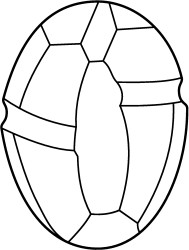Difference between revisions of "Bradleyella adela"
From dinoflaj3
| Line 14: | Line 14: | ||
|?Category:Type#<nowiki>*</nowiki>, | |?Category:Type#<nowiki>*</nowiki>, | ||
|?Category:TypeCorrectName#<nowiki>+</nowiki>, | |?Category:TypeCorrectName#<nowiki>+</nowiki>, | ||
| − | |limit= | + | |limit=400 |
|format=template | template=SpeciesListNoQuest | |format=template | template=SpeciesListNoQuest | ||
|?Category:Quoted#",''' | |?Category:Quoted#",''' | ||
|Outro=</div>}} | |Outro=</div>}} | ||
Revision as of 15:36, 4 December 2016
*adela (Fenton et al., 1980, p.155-156, pl.14, figs.1-4; text-figs.3A-B) Woollam, 1983, p.194. Holotype: Fenton et al., 1980, pl.14, fig.3; text-figs.3A-B; Fensome et al., 1993a, fig.1 - p.883. Originally Dichadogonyaulax, subsequently Ctenidodinium, thirdly (and now) Bradleyella. Fenton et al. (1980) cited the epithet as "adelos", the Greek adjective for "obscure". Since taxon names are to be treated as Latin under the I.C.N., the epithet should be rendered as "adela", in agreement with the feminine gender of the generic name; "adelum" would be the neuter form, and "adelus" the masculine form. Age: Late Bajocian.
